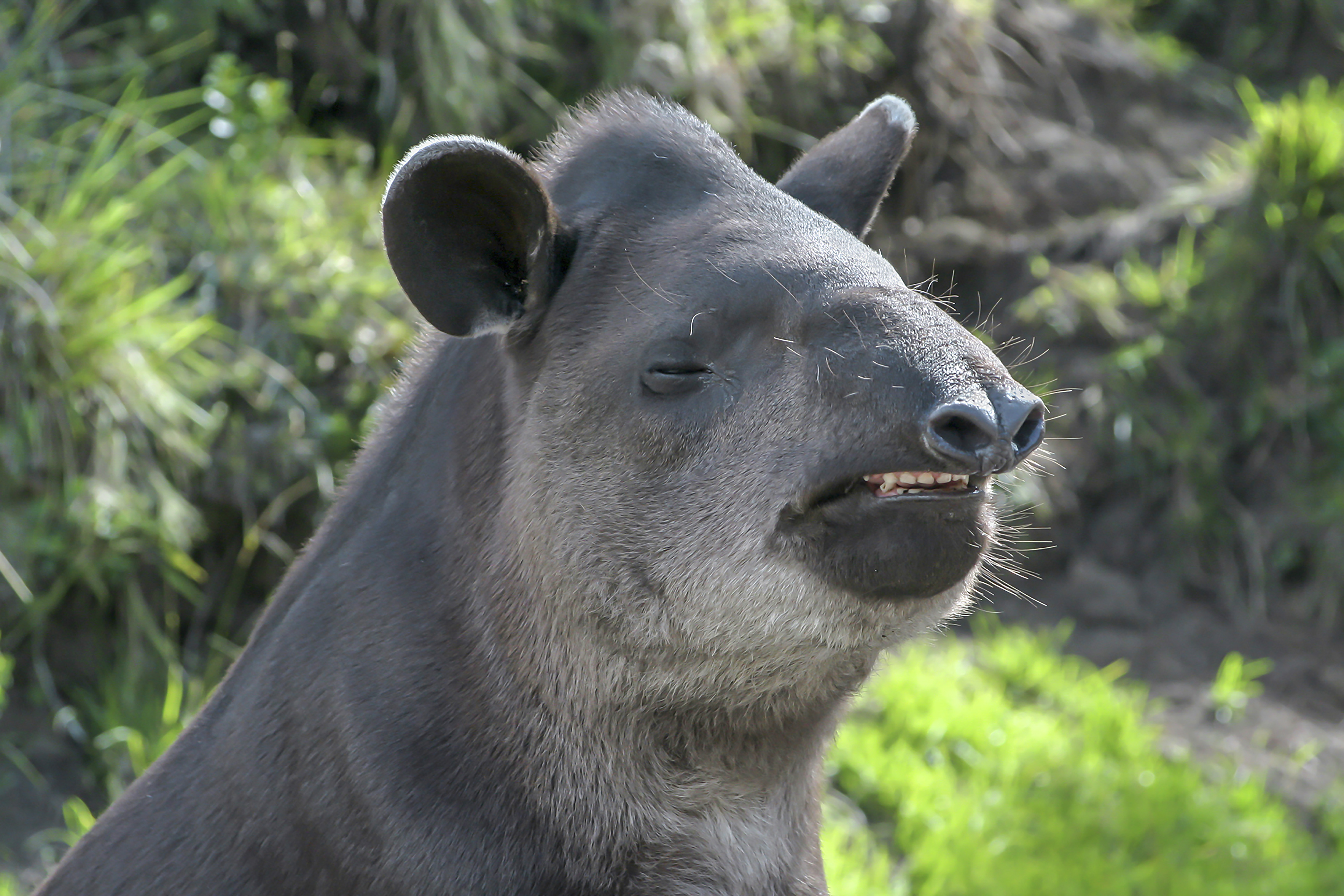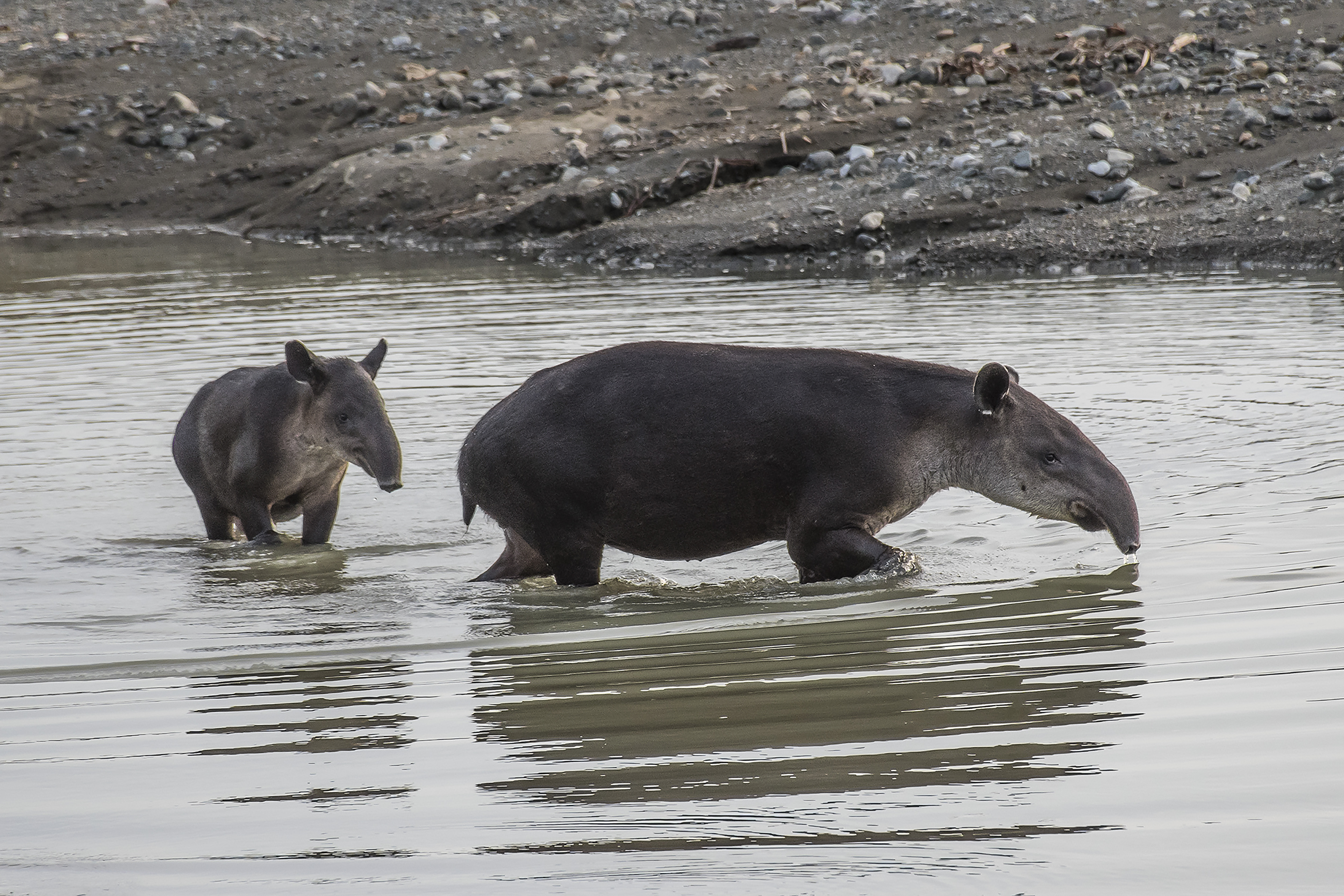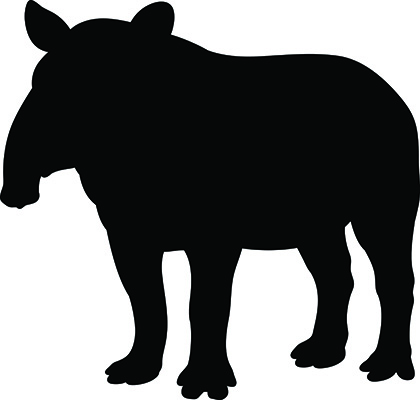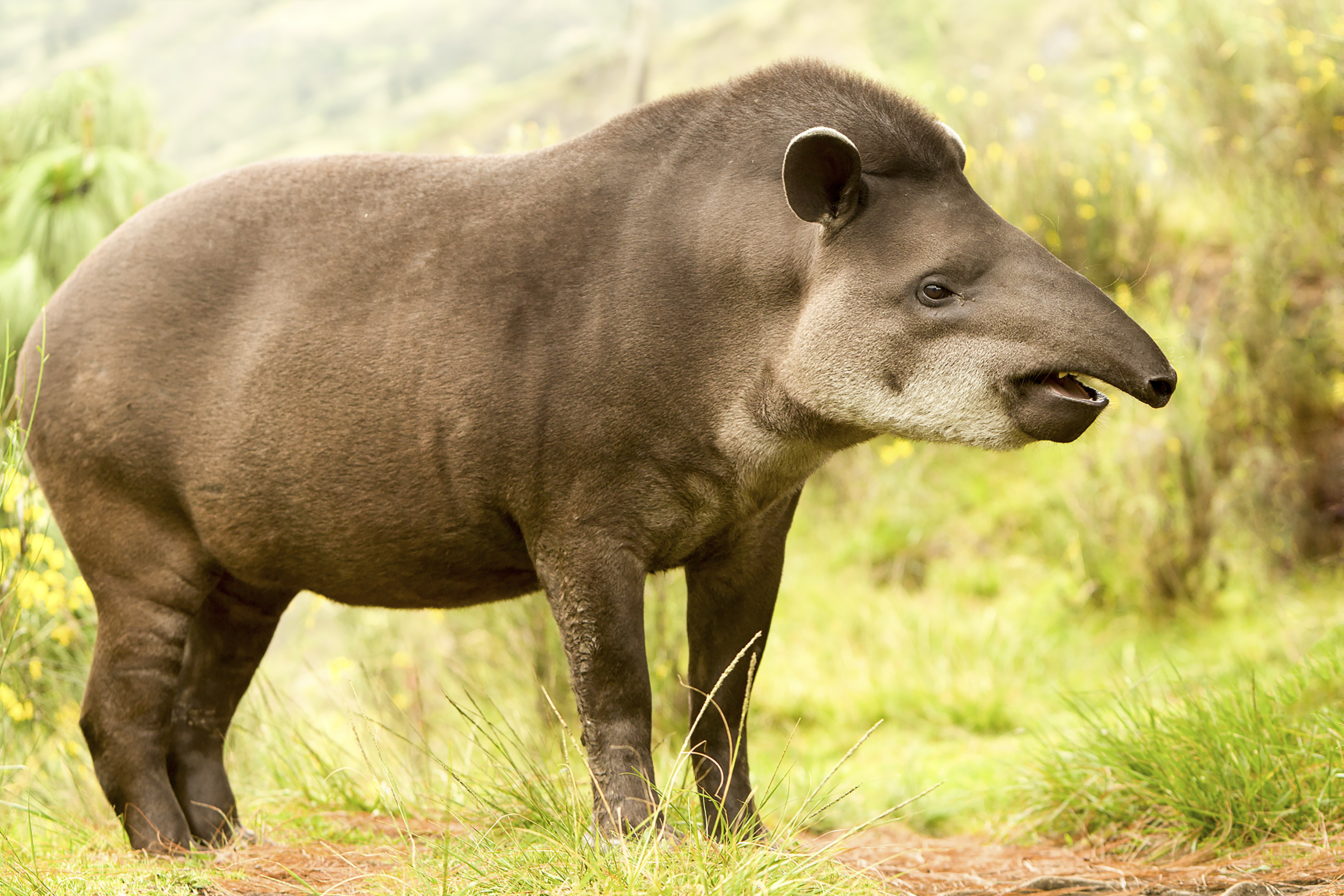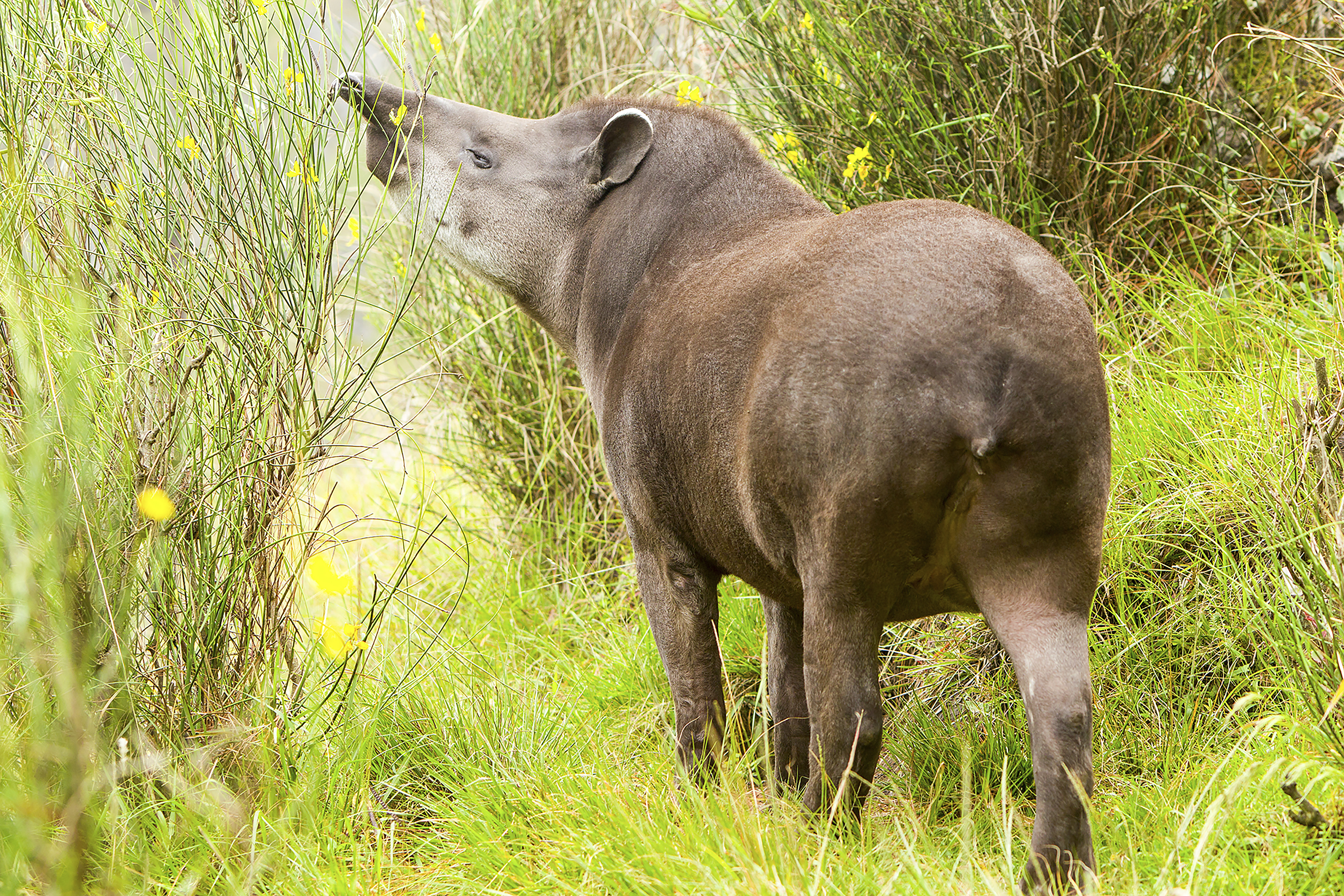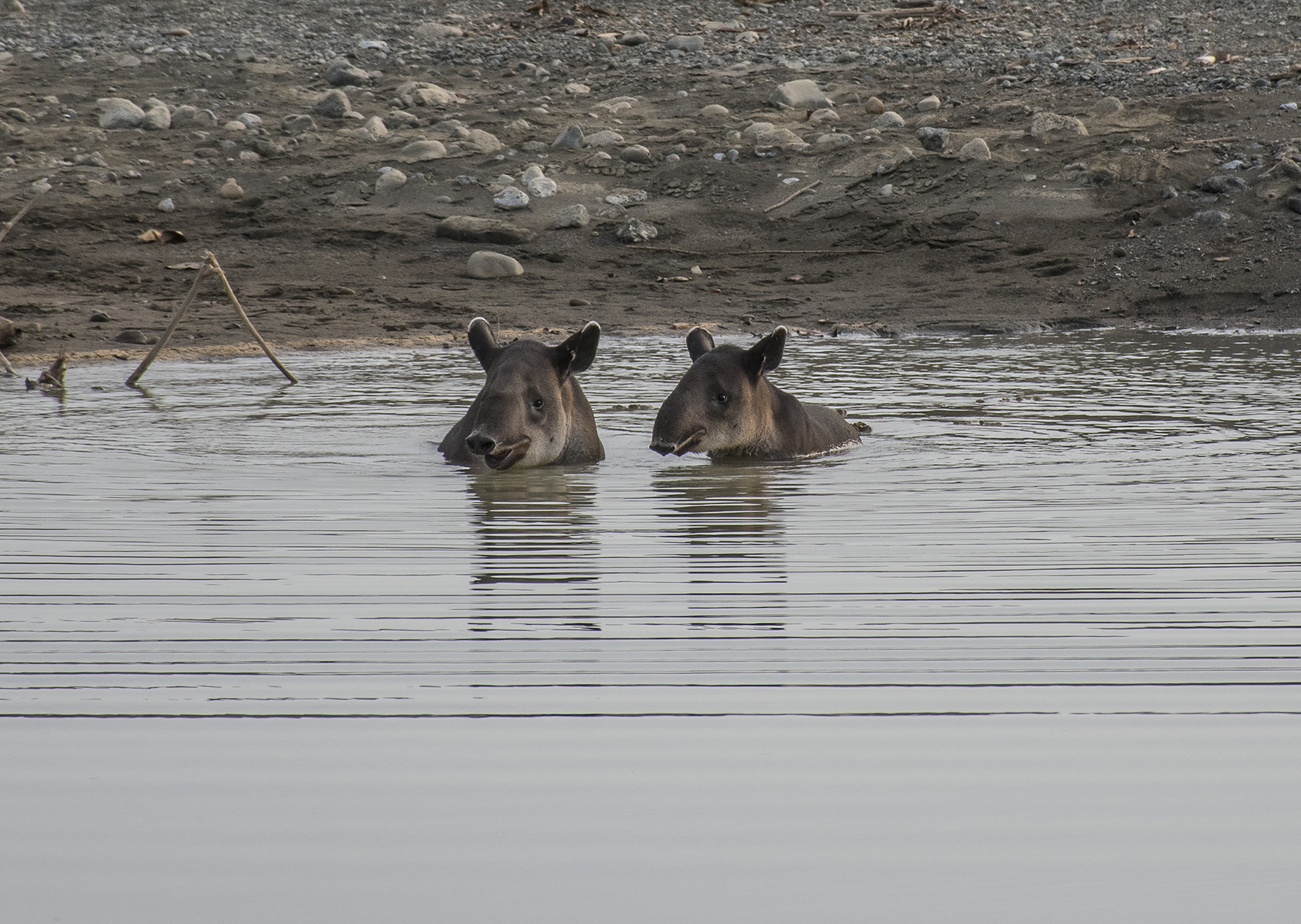Mountain Tapir
( Tapirus pinchaque)
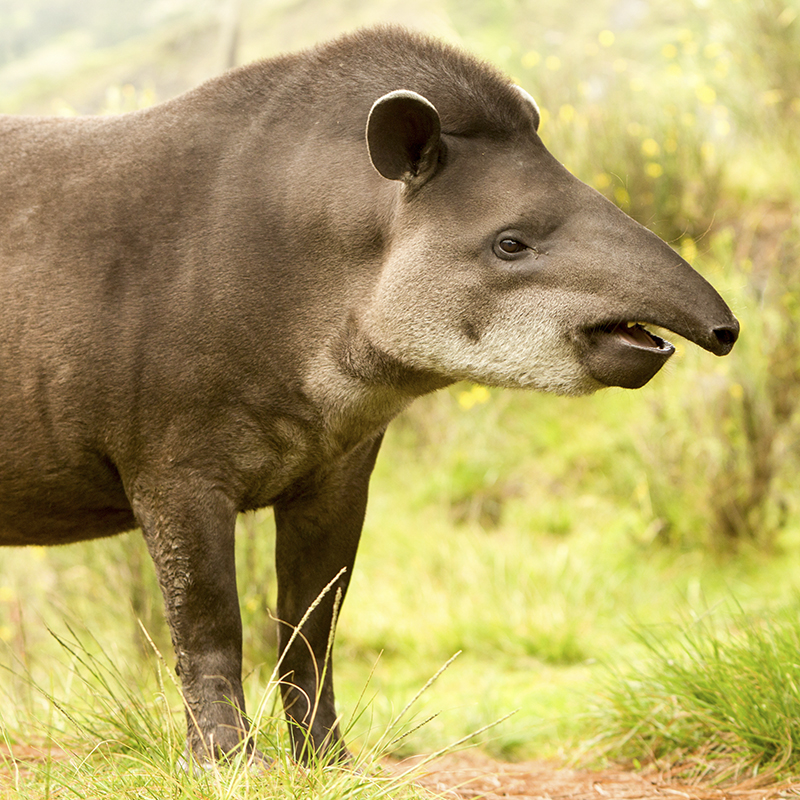
Northern Andean Montane Forests
STATISTICS
Height up to
0.9 meters
Length up to
1.8 meters
Weight up to
182 kgs
Lifespan
30 Years
Sure-Footed - Keen Sense of Smell
Of the lineage of dinosaurs, the Mountain Tapir is a living fossil whose genes stem back some 55 million years. The smallest of the four species of tapir, the Mountain Tapir has thick, woolly, brown or black fur with white tips on the ends of its ears. Its lips and nose form a prehensile proboscis, and it has an exceptional sense of smell.
It has four digits on its forefoot and three on its back and is exceptionally sure-footed and well adapted for navigating steep terrain. Typically active between the late afternoon and early morning, this species spends most of the day resting.
It grazes on seeds, foliage, and shoots and is a vital seed disperser in the high Andes. Due to its poor digestive system, a relatively high number of seeds it eats germinate and species such as the Wax Palm and Highland Lupine rely almost exclusively on the tapir for dispersal.
It also snaps branches and pushes over tree trunks making more food available for other species. It communicates with shrill bird-like whistles and marks territory by urinating.
BIODIVERSITY BENEFIT
Seed Dispersal - Ecosystem Engineer
THREATS
Habitat Destruction
Due to logging and agriculture in the Andes.
Illegal Poaching
Hunted for their meat, hooves and snouts which are used as cures for epilepsy and heart ailments.
Habitat Disturbance
This species is sensitive to habitat disturbance and will disappear after cattle are introduced.
PROTECT THE WILDARK 100
